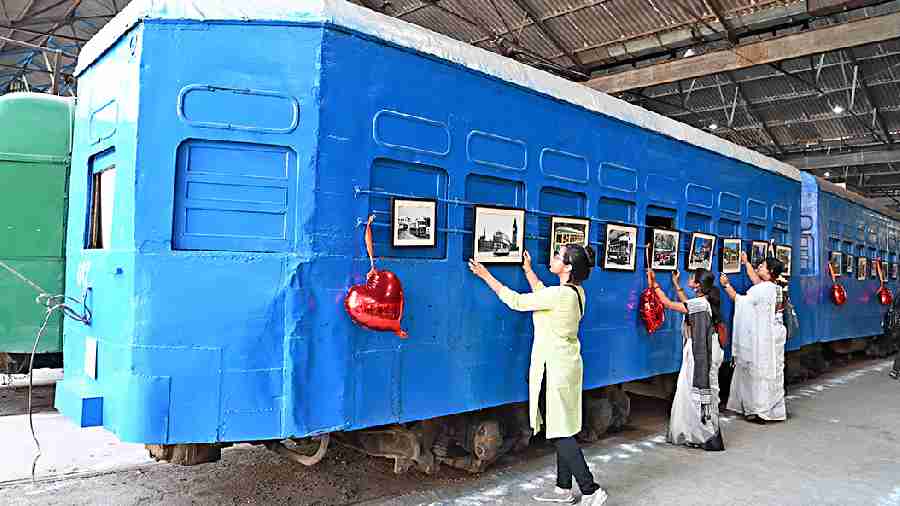A tram car that was first used to supply water and wash tracks in the 1920s will trundle again for a day to celebrate 150 years of Kolkata’s trams.
In company on the day, later this month, will be two trams made of wood, manufactured in the succeeding two decades but now lying idle in the depots. They sustained through World War II, witnessed events of history like the Bengal famine, communal riots and the struggle for Independence, and are now themselves objects of history.
Newer trams like double-bogey and air-conditioned ones that are used now will be part of the fleet, too.
“The trams will tell the story of a mode of transport that is the oldest companion of our city to have survived,” said Sagnik Gupta, a member of TramYatra, a group of tram lovers who are organising the celebrations, with support from the West Bengal Transport Corporation (WBTC), later this month.
“The water car was once used to supply water to various parts of the city and to wash the tracks. They are now used to tow away other trams or for work inside a garage. The wooden trams are from the 1930s and 1940s. They went out of use in the 2010s,” said Gupta.
The WBTC website says that the first tram, a horsedrawn car, rolled on the tracks on February 24, 1873.
Steam engine trams were introduced in 1882 and the first electricity-powered tram was introduced in Kolkata in 1900. More than a century later, keeping in tune with the demand of the times, AC trams were introduced in 2013.
The Calcutta Tramways Company, which no longer exists, was formed and registered in London in December 1880.
On Saturday morning, Tram Yatra announced their plan to celebrate 150 years of trams during a short programme at the Gariahat Tram Depot.
There will be debates, essay writing competitions for children and a walk from the Victoria Memorial to the Esplanade Depot, all of which will be themed around trams and their utility.
Trams should not be thought of as something of heritage value only but also as something that can provide sustainable mobility solutions, said an organiser.
Manfred Auster, German Consul General to Kolkata, who was present on Sunday, spoke about how West Germany discontinued trams in 1968 and later “realised its mistake”.
“When the Berlin Wall fell in 1989, tracks were laid again by the West. Today, you can travel between what was earlier parts of East and West Germany in a tram and it is a popular mode of transport. People prefer using public transport like trams over cars,” he said.
Roberto D’Andrea, a tram conductor from Melbourne, will be in the city for the celebrations.
“There are a few things that come to mind when someone thinks about Calcutta and trams are one of them,” said Rajanvir Singh Kapur, managing director of WBTC.
But there are lingering doubts whether the state government really wants trams to live longer.
“There are about 30 routes with tracks even now. There were around 25 routes with running trams even in 2017. There are only two running routes now,” Gupta said. They are route numbers 25 (Gariahat-Esplanade) and 24/29 (Tollygunge-Ballygunge).
Kapur said one should not expect all routes to be thrown open all at once. “We will soon lay tracks for a heritage route from Esplanade that will travel on a loop along the Maidan, which is so beautiful,” he said. “We have introduced free WiFi in our AC trams. Our objective is to make trams cool so young people start using it.”
